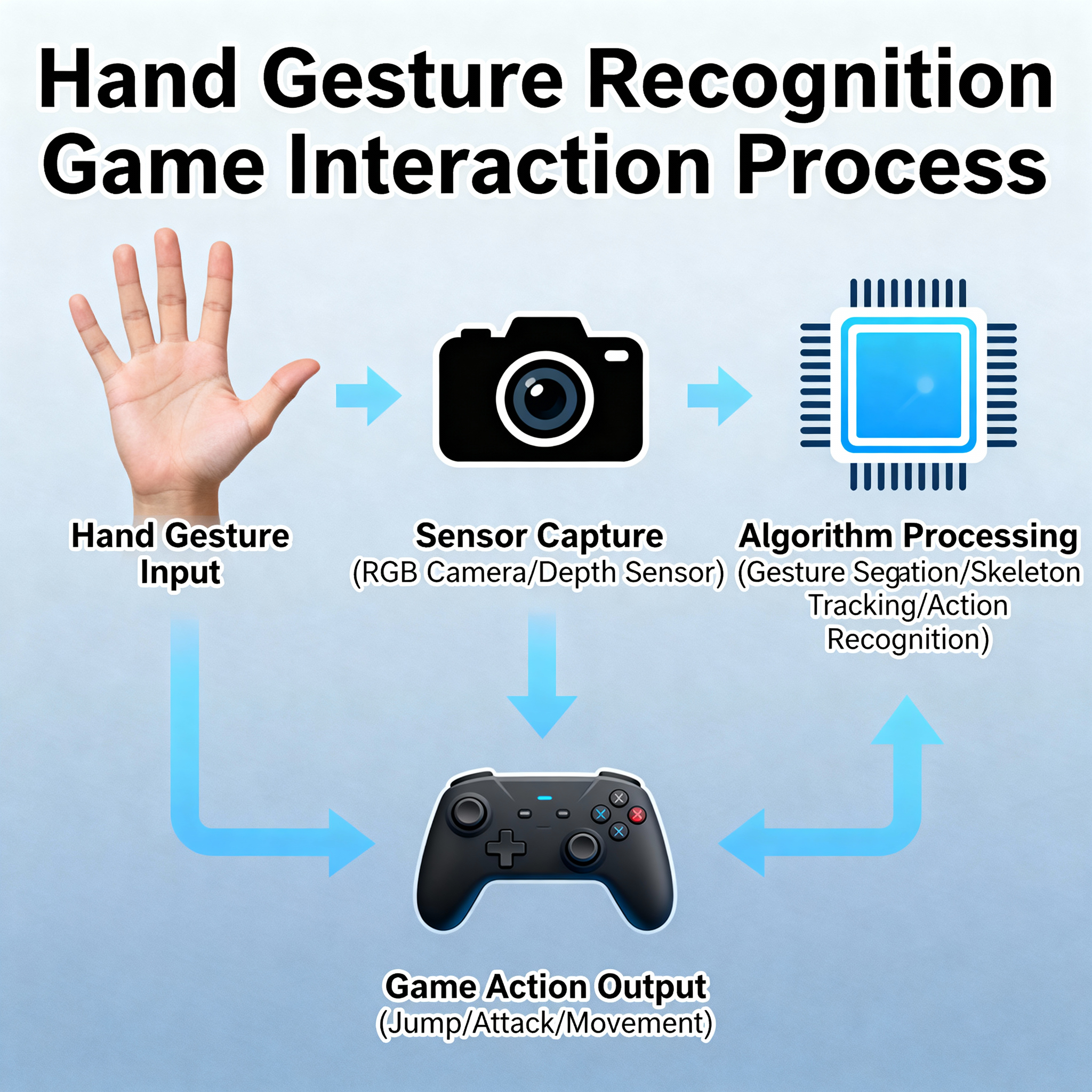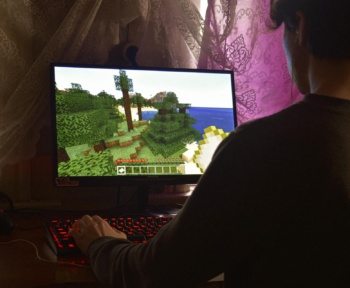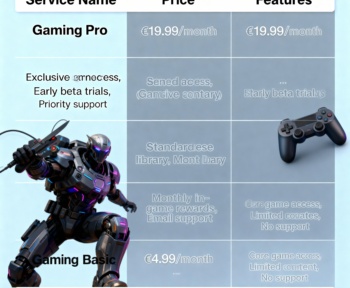The integration of gesture and voice control technologies into gaming has transcended gimmicky implementations to become powerful accessibility tools and innovative gameplay mechanisms. Modern web APIs, advanced machine learning, and improved hardware sensors have enabled control schemes that make gaming accessible to millions while creating entirely new genres of interactive experiences.
Technical Foundations of Gesture Recognition
Modern gesture recognition leverages computer vision and machine learning to interpret human movement with remarkable precision. Cameras capable of depth sensing, infrared tracking, and 120fps capture rates provide rich data streams that algorithms process in real-time. The MediaPipe framework from Google has democratized gesture recognition, enabling web developers to implement sophisticated hand tracking with just a few lines of code.
The processing pipeline for gesture recognition involves multiple stages of complexity. Initial image capture undergoes preprocessing to normalize lighting and remove background noise. Feature extraction identifies key points like fingertips and joints. Machine learning models trained on millions of gesture examples classify movements into recognized commands. This entire process must complete within 16 milliseconds to maintain responsive 60fps gameplay.
Edge computing has made gesture recognition viable on modest hardware. Instead of sending video streams to cloud servers, modern systems process gestures locally using optimized neural networks. TensorFlow Lite and ONNX Runtime enable complex models to run on mobile devices and browser environments without perceptible latency. This local processing ensures privacy while eliminating network dependency.
Voice Control Implementation and Natural Language Processing
Voice control in gaming has evolved from simple command recognition to sophisticated natural language understanding. Modern systems process continuous speech, understand context, and even detect emotional tone. The Web Speech API provides browser-based games with powerful voice recognition capabilities without requiring plugins or downloads.
The integration of large language models has revolutionized voice interaction in games. Instead of rigid command structures, players can speak naturally with AI companions that understand intent rather than just keywords. Games like Phasmophobia use voice recognition for ghost detection, while There Came an Echo builds entire gameplay mechanics around voice commands.
Multilingual support presents unique challenges for voice-controlled gaming. Accent variations, regional dialects, and code-switching between languages require robust recognition systems. Modern approaches use transfer learning to adapt models trained on major languages to support regional variants with limited training data. This inclusivity ensures voice gaming isn’t limited to English speakers.
Accessibility as a Core Design Principle
The gaming industry’s approach to accessibility has shifted from afterthought to fundamental design consideration. Gesture and voice controls provide gaming access to players with motor disabilities who cannot use traditional controllers. The Xbox Adaptive Controller’s success demonstrated massive unmet demand for accessible gaming options.
Eye tracking technology enables gaming for players with severe motor limitations. The Tobii eye tracker and similar devices translate eye movements into game inputs, allowing tetraplegic players to enjoy complex games. Web-based implementations using standard webcams democratize this technology, though precision limitations restrict genre suitability.
Multimodal input systems combine gesture, voice, gaze, and traditional controls to accommodate diverse abilities. Players can customize control schemes to their capabilities, using voice for some commands and gestures for others. This flexibility ensures games remain playable as abilities change due to fatigue, injury, or progressive conditions.
Web API Integration and Browser Capabilities
The evolution of web APIs has enabled sophisticated gesture and voice control directly in browsers. The MediaStream API provides webcam access for gesture recognition. The Web Speech API enables voice commands and speech synthesis. The Gamepad API supports adaptive controllers. These standards ensure consistent implementation across platforms.
WebRTC enables real-time processing of audio and video streams with minimal latency. This technology, originally designed for video conferencing, provides the low-latency pipeline necessary for responsive gesture and voice gaming. Peer-to-peer connections can even enable gesture-based multiplayer where players see each other’s movements.
Progressive enhancement strategies ensure games remain playable without gesture or voice support. Games detect available APIs and hardware capabilities, offering alternative control schemes when advanced features are unavailable. This approach maximizes accessibility while maintaining broad compatibility across devices and browsers.
Innovation in Motion-Based Gameplay
Motion-controlled gaming has evolved beyond the waggle-fest of early Wii titles to create genuinely innovative experiences. Ring Fit Adventure demonstrated that motion controls could provide engaging fitness experiences that rival traditional exercise programs. The game’s success during pandemic lockdowns proved motion gaming’s value beyond entertainment.
Hand tracking without controllers has enabled new genres impossible with traditional input. Games where players cast spells through hand gestures, conduct virtual orchestras, or manipulate 3D objects naturally showcase unique possibilities. The absence of physical controllers reduces barriers to entry while enabling more intuitive interactions for non-gamers.
Full-body tracking through single cameras has become feasible through pose estimation algorithms. Games can track player skeleton positioning without expensive motion capture equipment. This technology enables dance games, fitness applications, and sports simulations that respond to whole-body movement. The democratization of motion capture opens creative possibilities for independent developers.
Voice Acting and Player Expression
Voice control enables players to become actors within game narratives. Horror games use voice detection to increase immersion, with monsters responding to player vocalizations. Role-playing games allow players to speak dialogue choices rather than selecting from menus. This direct vocal participation creates deeper emotional investment in game stories.
Emotional recognition through voice analysis adds another dimension to gameplay. Games can detect stress, excitement, or fear in player voices, adjusting difficulty or narrative accordingly. While raising privacy concerns, this technology enables empathetic game experiences that respond to player emotional states.
Voice modulation and effects processing allow players to embody characters vocally. Real-time voice changing enables role-playing as different genders, species, or ages. Streaming and content creation benefit from integrated voice modification that maintains character consistency without post-processing.
Cultural and Social Implications
Gesture-based gaming faces cultural sensitivity challenges with movements having different meanings across cultures. What’s innocuous in one culture might be offensive in another. Developers must carefully consider gesture vocabularies to avoid unintentional cultural insensitivity. This complexity has led to customizable gesture libraries that players can modify to their comfort.
Voice gaming in shared spaces creates social challenges. Players may feel self-conscious speaking commands in public or disturbing others in shared living spaces. Solutions include sub-vocal recognition systems that detect whispered or mouthed commands. Bone conduction microphones can isolate player voice from environmental noise.
The social aspects of gesture gaming have created new forms of multiplayer interaction. Party games where players mirror movements or compete in gesture challenges bring physical activity to social gaming. Streaming gesture-based games creates engaging content as viewers watch streamers’ physical performances alongside gameplay.
Health and Ergonomic Considerations
Extended gesture gaming can cause repetitive strain injuries similar to traditional gaming. “Gorilla arm” syndrome, where holding arms extended causes fatigue, limits gesture gaming session length. Ergonomic design of gesture vocabularies that minimize large movements and provide rest periods is essential for player health.
Voice gaming presents unique health considerations around vocal strain. Extended shouting in action games or continuous talking in voice-controlled titles can damage vocal cords. Games must implement volume normalization and encourage vocal rest periods. Some games include vocal warm-up exercises and strain monitoring.
The physical activity inherent in gesture gaming provides health benefits absent from traditional gaming. Studies show improved coordination, balance, and cardiovascular health from regular motion gaming. Rehabilitation programs increasingly incorporate gesture-based games for physical therapy, combining treatment with entertainment.
Privacy and Security Concerns
Always-listening microphones and always-watching cameras raise significant privacy concerns. Players worry about surveillance, data collection, and potential breaches exposing intimate home footage. Transparent data handling policies and local processing options are essential for user trust.
Voice and gesture data can reveal sensitive information beyond gaming inputs. Speech patterns might indicate health conditions, while home environments visible in cameras expose personal information. Developers must carefully consider what data is collected, how it’s processed, and how long it’s retained.
Security vulnerabilities in gesture and voice systems could enable new attack vectors. Ultrasonic commands inaudible to humans could trigger voice controls. Adversarial images could cause gesture recognition to misinterpret inputs. These security considerations require ongoing vigilance and regular system updates.
Development Tools and Frameworks
The ecosystem of tools for implementing gesture and voice control has matured significantly. Unity and Unreal Engine provide built-in support for motion tracking and voice recognition. Web frameworks like Handtrack.js and Annyang.js enable rapid prototyping of gesture and voice-controlled games.
Machine learning frameworks have simplified custom gesture recognition development. Developers can train models on game-specific gestures without deep ML expertise. Transfer learning allows starting from pre-trained models and fine-tuning for specific applications. This democratization enables small teams to implement sophisticated control schemes.
Testing and debugging gesture and voice controls presents unique challenges. Automated testing must simulate human movement and speech across diverse conditions. Recording and replaying gesture sequences enables regression testing. Cloud-based testing services provide access to diverse hardware configurations and user populations.
Market Adoption and Consumer Reception
Consumer adoption of gesture and voice gaming remains niche despite technological advancement. The failure of Kinect and modest sales of PSVR2 suggest limited mainstream appetite. However, specific applications like fitness gaming and accessibility features show strong adoption where they provide clear value.
The generational divide in comfort with gesture and voice interfaces is narrowing. Younger players raised with touchscreens and voice assistants show greater willingness to adopt alternative control schemes. As these digital natives age, gesture and voice gaming may achieve broader acceptance.
Price points for gesture and voice hardware continue declining. Webcams sufficient for gesture recognition are standard on most devices. Quality microphones are increasingly built into gaming headsets. This commoditization removes financial barriers to adoption, though space requirements for motion gaming remain limiting factors.
Future Technological Developments
Neural interfaces represent the next frontier beyond gesture and voice control. Companies like Neuralink and Synchron develop brain-computer interfaces that could enable thought-controlled gaming. While currently limited to medical applications, consumer neural interfaces might arrive within a decade.
Haptic feedback systems will enhance gesture gaming by providing tactile responses to air gestures. Ultrasound haptics create touch sensations without physical contact. These technologies could make gesture controls feel as responsive as physical buttons.
Augmented reality will merge gesture gaming with physical environments. AR glasses will enable gesture interactions with virtual objects overlaid on real spaces. This convergence of digital and physical will create new gaming experiences impossible with current technology.





